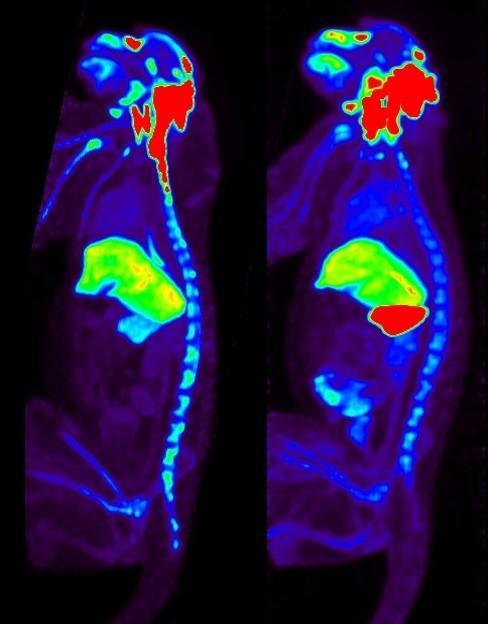Award or Grant: National Institutes of Health (NIH) (R01) EB027918
Adeno-associated virus (AAV) is a widely used vector for gene delivery. Its in vivo distribution, though, has not been well characterized, as most studies are based on rodent biopsy or necropsy data. The distribution is also dependent on route of administration and pre-existing immunity. The goal of this project was to develop an in vivo imaging method using iodine (I)-124 positron emission tomography (PET) to quantitatively assess AAV distribution serially for days after administration. We successfully used the organ AAV elimination curves to construct a systemic biodistribution model of AAV addressing both intravenous and intracisternal delivery.
Full Caption: This image depects the biodistribution of AAV. PET images 24 hours after iodine I-124-labeled AAV serotype rh (rh)10 administered via intracisternal route to a nonhuman primate, showing differences in organ biodistribution between serotype naïve (L) and serotype immune (R) status. With anti-capsid immunity, uptake in spleen increased by more than a factor of 10.


